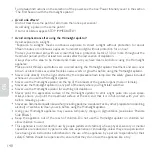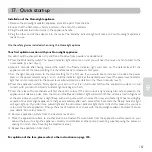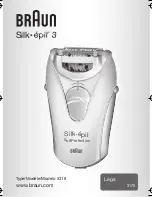
EN
146
9.2. What impact does the growth cycle of the hair have on photo-epilation?
Every hair on our body has three growth phases: the anagen, catagen and telogen phases. These three
phases play an important role in the process of photo-epilation. The anagen phase is the growth phase
of the hair, while the catagen and telogen phases are both resting phases. The time the hair takes to go
through its follicular cycle varies completely from one person to the
next, and from one part of the body to the next. We can, however,
establish an average of between 18 and 24 months.
Most hair follicles are found at any one time in one of the two resting
phases. Consequently, the Homelight epilator will have no effect when
they are in these resting phases. Nonetheless, it will affect the hair
that is in anagen phase. It is therefore important to understand the
duration of a full follicular cycle to obtain lasting results with your
Homelight device.
18 to 24
months
anagen
telogen
catagen
9.1. How does the light eliminate hair?
Photo-epilation is based on the theory of selective photothermolysis which uses optical energy to stop the
growth of the hair. To obtain such thermal effects, the root of the hair must selectively absorb the photoenergy
and transform it into heat. This selection is produced when most of the optical energy emitted is absorbed by
the pigment of the bulb, while the surrounding skin and tissue remain cold.
Melanin is the pigment found in the hair bulb, responsible for absorbing light, generating the heat that stops the
hair growth. Also, the more melanin in the hair (i.e., the darker the hair), the more light it can absorb and the
more efficient photo-epilation becomes.
9.3. Optimising the results by planning your Homelight depilation sessions
A full follicular cycle takes on average from 18 to 24 months during which many sessions with your
Homelight epilator will be necessary to obtain long-lasting results. The efficiency of the appliance will vary
from one person to the next and will depend on the area being treated, the colour of the hair and the way
in which the appliance is used.







































